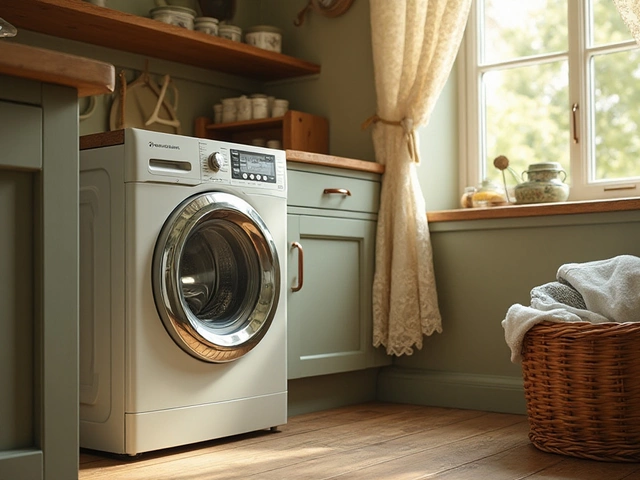If your microwave has stopped heating, makes strange noises, or won’t start, you don’t have to rush to a repair shop right away. Most issues are small, cheap to fix, and can be tackled with a few basic tools. Just remember: safety first – always unplug the unit before you start any work.
Microwave won’t heat. The most likely culprit is a faulty magnetron, but before you replace anything, check the door latch and the high‑voltage diode. The door latch sensor tells the microwave it’s safe to run; if it’s stuck, the oven won’t turn on. Clean the latch area with a dry cloth, then test the door switch with a multimeter. If the switch reads zero resistance, it’s good. If not, replace the latch – it’s usually under $15.
Turntable won’t spin. Remove the turntable tray and inspect the motor coupler. Over time, the plastic piece can crack and stop transferring power. Swapping the coupler with a new one (often sold as a “microwave turntable motor kit”) restores smooth rotation. While you have it off, give the motor shaft a quick clean with a soft brush.
Weird buzzing or humming. This can be a loose fan blade or a failing high‑voltage transformer. Open the back panel, locate the cooling fan, and tighten any loose screws. If the fan still rattles, replace it – it’s a cheap part and a simple swap. A buzzing transformer usually means it’s overheating; check for dust buildup on the heatsink and blow it out with compressed air.
Microwave won’t start at all. Start with the simplest check: the fuse. Unplug the unit, locate the fuse (often a glass tube near the power cord), and test it with a multimeter. If it’s blown, replace it with the same rating. Next, look at the door interlock switches – there are usually two or three. Any one of them being faulty will keep the microwave from powering up.
Even with the best DIY spirit, some jobs are best left to the experts. If you’ve tested the magnetron, high‑voltage diode, and transformer and the microwave still won’t heat, you’re dealing with high‑voltage components that can store dangerous charges. Also, if the microwave shows signs of water damage, burning smells, or sparks, shut it down immediately and call a certified repair technician. Trying to fix these parts yourself is risky and could cause more damage.
Lastly, consider the cost‑benefit factor. A typical microwave costs £80‑£150. If the parts you need add up to more than half that price, or the unit is over ten years old, it might be smarter to replace it. Modern microwaves are more energy‑efficient and come with better safety features.
In short, many everyday microwave hiccups can be solved with a quick look at the door latch, turntable motor, fan, and fuse. Keep a basic toolkit – screwdriver, multimeter, and a small brush – handy, and you’ll save time and money. When in doubt, or when high‑voltage parts are involved, call a professional and stay safe.

Wondering if you can fix your microwave at home instead of tossing it and buying a new one? This article breaks down common microwave problems, what you can safely handle, and when it's better to call a pro. Get practical tips that actually make a difference, plus real talk about microwave safety. Save yourself time, money, and stress with easy-to-follow advice. Tackling your appliance repair just got a whole lot simpler.

Microwave ovens, essential kitchen appliances for many households, can sometimes fail to operate smoothly. This article dives into the intricacies of microwave repair, exploring common issues, troubleshooting methods, and practical repair tips. Designed for both amateur DIY enthusiasts and curious individuals, the guide offers insights into understanding microwave components and determining when professional help is necessary. Learn the skills needed to fix minor problems and tips to maintain the efficiency of your microwave.

Choosing a reliable washing machine can be a daunting task given the numerous options available. This article provides insights into brands known for fewer repair issues and shares tips to maintain and extend the washer's lifespan. With technological advancements and design improvements, knowing how to select a durable washer can save time and money. Learn about the top performing washer brands based on recent studies and consumer reports. Also, discover interesting ways to keep your machine running smoothly.

Cookers are an essential part of any kitchen, and knowing their average lifespan can help in planning for replacements and repairs. On average, cookers last between 10 to 15 years depending on several factors like usage, maintenance, and brand quality. Regular maintenance and timely repairs can extend the life of your cooker significantly. Understanding the warning signs of wear and tear and knowing when to repair or replace can save both time and money. This article will dive into expert tips to maximize the life of your cooker.

Navigating the world of cooker repair can seem daunting, but armed with the right knowledge, it becomes manageable. This article explores common issues faced by cookers, signs that suggest whether repair is possible, and steps on how to approach fixing these vital kitchen appliances. By identifying whether a do-it-yourself fix is feasible or when to call in a professional, you can make informed decisions about your cooker. Learn about maintenance tips to prolong the life of your cooker and keep it working efficiently.

Wondering if your 20-year-old oven can be repaired? Discover repair tips, replacement part insights, costs, and when it makes sense to swap your old oven for a new one.

A 40-year-old boiler can pose potential safety risks. Understanding the wear and tear it undergoes over the decades is crucial. Regular maintenance and safety checks are essential to ensure it operates safely. Homeowners should consider the pros and cons of keeping such an old appliance. Discover tips and advice on making informed decisions regarding your boiler's safety and efficiency.